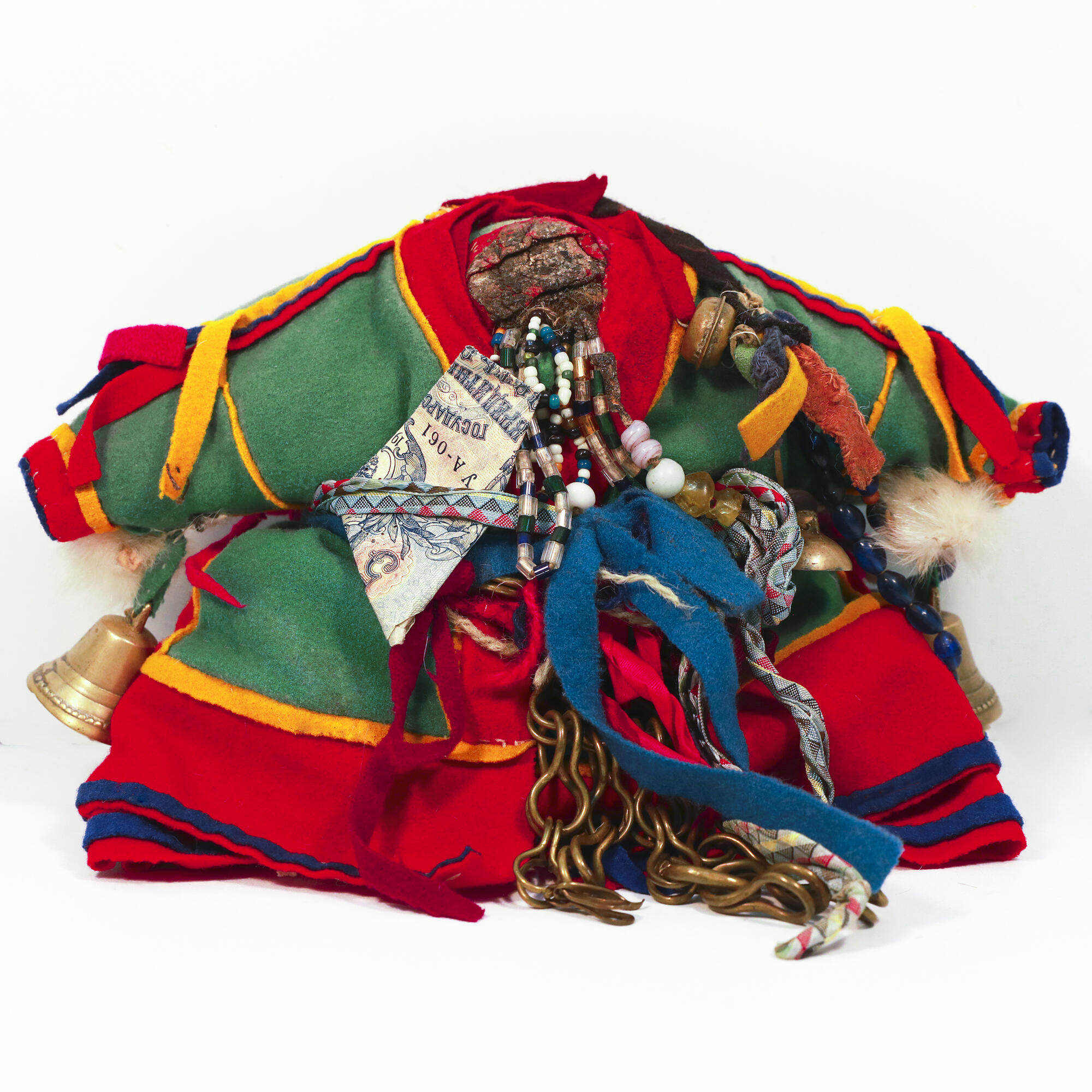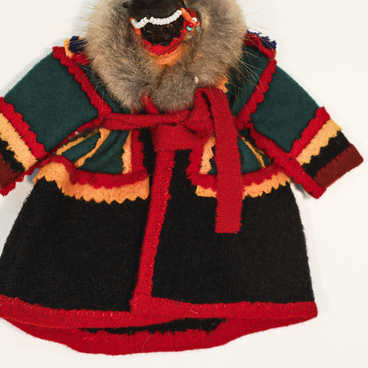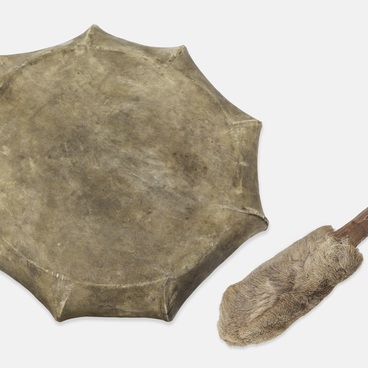The Nenets Museum of Local Lore houses a “myad’ pukhutsya” — a human-like doll made of several layers of fur and cloth. In the past, it was present in every Nenets chum tent. The doll was kept in the women’s half of the chum, usually on the pillow of the eldest woman in the family or in a bag above the headboard of her bed.
“Khekhe” is a common name of Nenets domestic spirits who helped and protected the family. They may be made in the form of stones, wooden animal figurines, metal idols, or cloth and fur dolls.
For the Nenets, such a doll symbolized both Ya-Myunya (Goddess of the Womb of the Earth) and Ya-Nebya (Earth Mother). Some researchers believe that the myad’ pukhutsya embodies the wife of the supreme deity Num, while others say that it represents the spirit of an old woman who lives underground, on the second earth, and can be summoned by the spirits who, in turn, are contacted by a shaman.
The myad’ pukhutsya or khekhe doll has no body: it consists only of clothes. The number of panitsas (coats) on the doll is believed to correspond to the number of children in the family. A khekhe doll was used in the process of childbirth. The midwife would take it in her hands, untie the clothes, and draw a circle in the air over the woman in labor, using this doll. During the contractions, a woman was supposed to press the myad’ pukhutsya against her abdomen.
The doll was also used in case of serious illness. It was placed near the headboard of the sick person’s bed. To find out whether the patient would recover or die, they took the doll and weighed it in their hands. The outcome of illness was assessed by whether the doll seemed light or heavy.
The Nenets also sought help in reindeer herding and hunting from other spirits who took the form of various animals and birds, usually a wolf or a loon. When a “khekhe” helped its owner, a reindeer was slaughtered for it, and a blood offering was presented to the idol, along with animals’ paws and noses. The idol was also offered other gifts: copper coins, belts, chains, and scraps of cloth and fur were attached to it, and sometimes clothes were made for the idol.
Men’s idols were kept separately from women’s dolls
— in the so-called clean part of the chum. During migrations, women’s dolls
were carried in women’s or cargo sleds, and men’s idols were transported on
special ritual sleds called “khekhe’ khan”.




